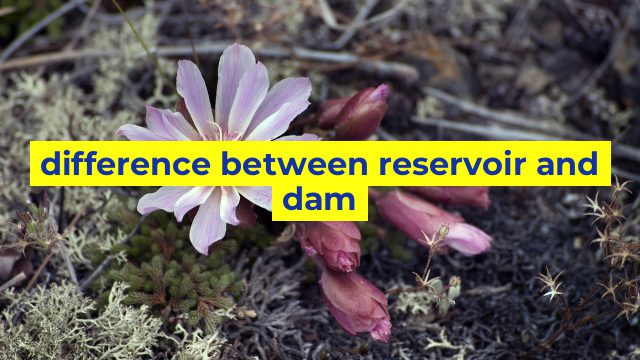The Difference Between a Reservoir and a Dam
Introduction
Reservoirs and dams are often used interchangeably to describe a body of water that is held back by a man-made structure. However, while they are related, they are not the same thing. In this article, we will discuss the differences between a reservoir and a dam.
What is a Reservoir?
A reservoir is an artificial body of water created by impounding a river or stream. Reservoirs are typically used to store water for future use, such as irrigation, drinking water, or hydroelectric power generation. They are also used for recreational purposes such as boating, fishing, and swimming.
Reservoirs can be created by building a dam across a river or stream, but they can also be created by excavating a depression in the ground and allowing water to fill it. Reservoirs can vary in size from small ponds to vast lakes that cover thousands of acres.
What is a Dam?
A dam, on the other hand, is a man-made structure designed to hold back water. Dams are built across rivers or streams to create a reservoir or to regulate the flow of water. They can also be built for flood control or to generate hydroelectric power.
Dams can take many different forms, such as earthen dams, concrete dams, or rock-fill dams, and they can vary in size from small structures to massive ones that span several miles.
The Main Differences
The main difference between reservoirs and dams is that a reservoir is a body of water created by impounding a river or stream, while a dam is a structure built to hold back water. Dams are usually built to create a reservoir, but they can also be built for other purposes such as flood control or hydroelectric power generation.
Another key difference between the two is that reservoirs are typically used for multiple purposes, while dams are usually built for a specific purpose. Reservoirs can be used for irrigation, drinking water, power generation, or recreational activities, while dams are typically built for one specific purpose, such as flood control or power generation.
Conclusion
In summary, reservoirs and dams are related, but they are not the same thing. A reservoir is an artificial body of water created by impounding a river or stream, while a dam is a structure built to hold back water. Reservoirs are typically used for multiple purposes, while dams are usually built for one specific purpose such as flood control or power generation. Understanding the differences between the two can help you better appreciate the impact they have on our environment and our lives.
Table difference between reservoir and dam
Here’s an example of a HTML table comparing reservoir and dam:
| Reservoir | Dam |
|---|---|
| A large natural or artificial lake used as a source of water supply. | A barrier built across a river or watercourse to hold back and control the flow of water. |
| Usually used for drinking water, irrigation or hydro-electric power generation. | Usually used for flood control, power generation or irrigation. |
| Water is stored in reservoirs for later use. | The water behind the dam is usually released for a specific purpose. |
| The water in a reservoir may be stagnant or slow-moving, causing potential problems with water quality. | Dams create a fast-moving current, which can be ideal for fish and other aquatic life. |

